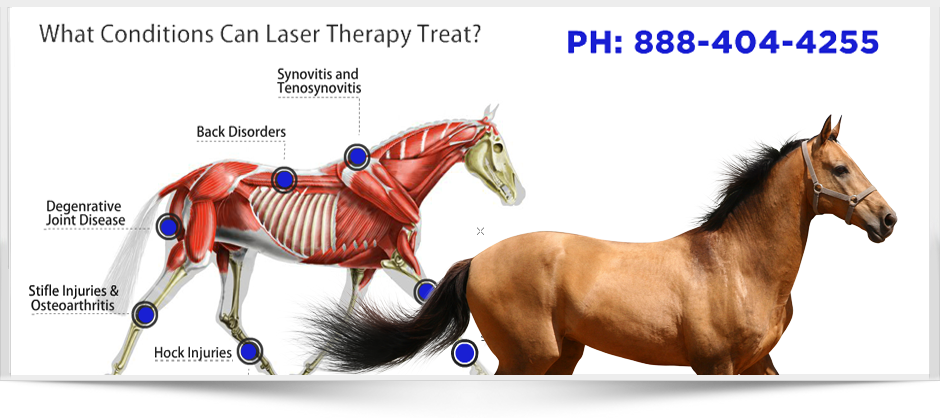Equine Therapy for Children: Emotional and Behavioral Assistance Clarified
Laser Therapy in Horse Therapy: A Modern Strategy to Improving Equine Health
Laser therapy has actually become a crucial strategy in equine treatment, utilizing concentrated light energy to foster mobile repair work and expedite healing from a variety of disorders. This non-invasive strategy is especially efficient in handling bone and joint injuries, wounds, and inflammatory conditions, substantially improving general horse health. By promoting mitochondrial task and increasing ATP production, laser therapy not only boosts flow yet additionally supplies significant discomfort relief. As this innovative treatment remains to gain traction, it opens intriguing opportunities for resolving persistent conditions like arthritis and unguis troubles, signaling a transformative change in vet care. What makes this method especially engaging?
Understanding Laser Therapy
Laser therapy, a non-invasive treatment modality, has actually obtained substantial traction in equine medicine due to its efficacy in promoting recovery and pain alleviation. Enhanced ATP degrees quicken cells repair work processes and reduce inflammation, making laser therapy especially effective for dealing with bone and joint injuries, wounds, and other inflammatory problems in horses.
There are numerous sorts of lasers used in equine therapy, each with certain wavelengths and power outcomes tailored to different therapeutic needs. Low-level laser therapy (LLLT), likewise called cold laser treatment, employs lower power degrees to promote cell feature without triggering thermal damages. High-intensity laser therapy (HANDLE), in contrast, uses higher power degrees to achieve deeper cells infiltration and even more considerable healing effects.
Veterinarians make use of numerous laser devices and strategies depending upon the problem being treated and the preferred depth of cells infiltration. Proper training and know-how are crucial for ensuring the secure and reliable application of laser treatment, consequently optimizing its restorative possibility while lessening dangers.
Benefits for Equine Health
With a strong understanding of just how laser treatment functions, it is crucial to explore its countless advantages for equine health. One of the main benefits is its capacity to accelerate tissue repair service and cell development. By promoting cellular function, laser therapy advertises faster wound recovery and help in the regeneration of broken tissues. This can be particularly advantageous in lowering recovery times for horses experiencing injuries.
In addition, laser treatment has been shown to boost flow, consequently improving blood flow to impacted areas. Boosted circulation ensures that crucial nutrients and oxygen are provided a lot more successfully, assisting in the healing process. Additionally, laser therapy's anti-inflammatory effects help in minimizing swelling and pain, which is critical for the total well-being of the steed.
Pain management is another substantial benefit. By launching endorphins and blocking discomfort signals, laser therapy provides efficient, non-invasive remedy for both intense and chronic discomfort. This can add to boosted movement and lifestyle for the animal.
Lastly, laser therapy is a non-invasive treatment alternative, lessening the risk of difficulties connected with even more invasive procedures. Its adaptability and effectiveness make it an indispensable device in modern equine vet medicine.
Typical Problems Treated

An additional widespread condition treated with laser therapy is joint inflammation. Additionally, laser therapy is utilized in the monitoring of wounds.
Horse respiratory conditions, such as recurring airway blockage (RAO), additionally respond favorably check this to laser therapy. The anti-inflammatory properties of the treatment aid in decreasing air passage swelling, hence improving respiratory function. Laser therapy is useful in dealing with hoof issues, consisting of laminitis and abscesses. By boosting flow and minimizing discomfort, it supports quicker recovery.
Procedure and Safety And Security
Applying laser therapy in equine therapy involves a careful procedure to make certain both efficiency and security. Equine Therapy. The procedure starts with an extensive veterinary analysis to identify the viability of laser therapy for the steed's particular condition. As soon as deemed ideal, the therapy location is prepared by cleaning and, if required, clipping the hair to enhance laser infiltration
The specialist needs to pick the appropriate kind of laser, generally a low-level laser (LLLT) or a high-power laser (HPL), relying on the problem being treated. The laser device is after that adjusted to the appropriate wavelength, power, and period setups. During the application, the specialist relocates the laser over the targeted location in a methodical fashion, guaranteeing constant and even direct exposure.
Safety procedures are purely complied with, consisting of making use of safety eyeglasses for both the practitioner and the steed. Furthermore, it is crucial to keep an eye on the steed for any indications of pain or damaging reactions throughout the treatment. Post-treatment, the horse is commonly given a period of remainder to enable the therapeutic results to manifest.

Future of Equine Laser Treatment
As improvements in vet medicine proceed to unravel, the future of equine laser treatment holds significant promise. Arising this page technologies and much deeper scientific insights are set to refine and expand the applications of laser treatment for steeds.
In addition, recurring study right into the molecular and mobile devices of laser therapy will likely produce optimized methods customized to specific conditions, boosting effectiveness and reducing therapy times. Individualized treatment plans based on genetic and biochemical pens might come true, ensuring that each horse obtains one of the most proper and reliable treatment.
Furthermore, regulatory advancements and standardization of methods will boost the reliability and dependability of laser therapy in equine practice. Equine Therapy. As these developments remain to emerge, equine laser therapy is poised to become an essential element of vet care, offering improved recovery and enhanced quality of life for steeds globally
Final Thought
